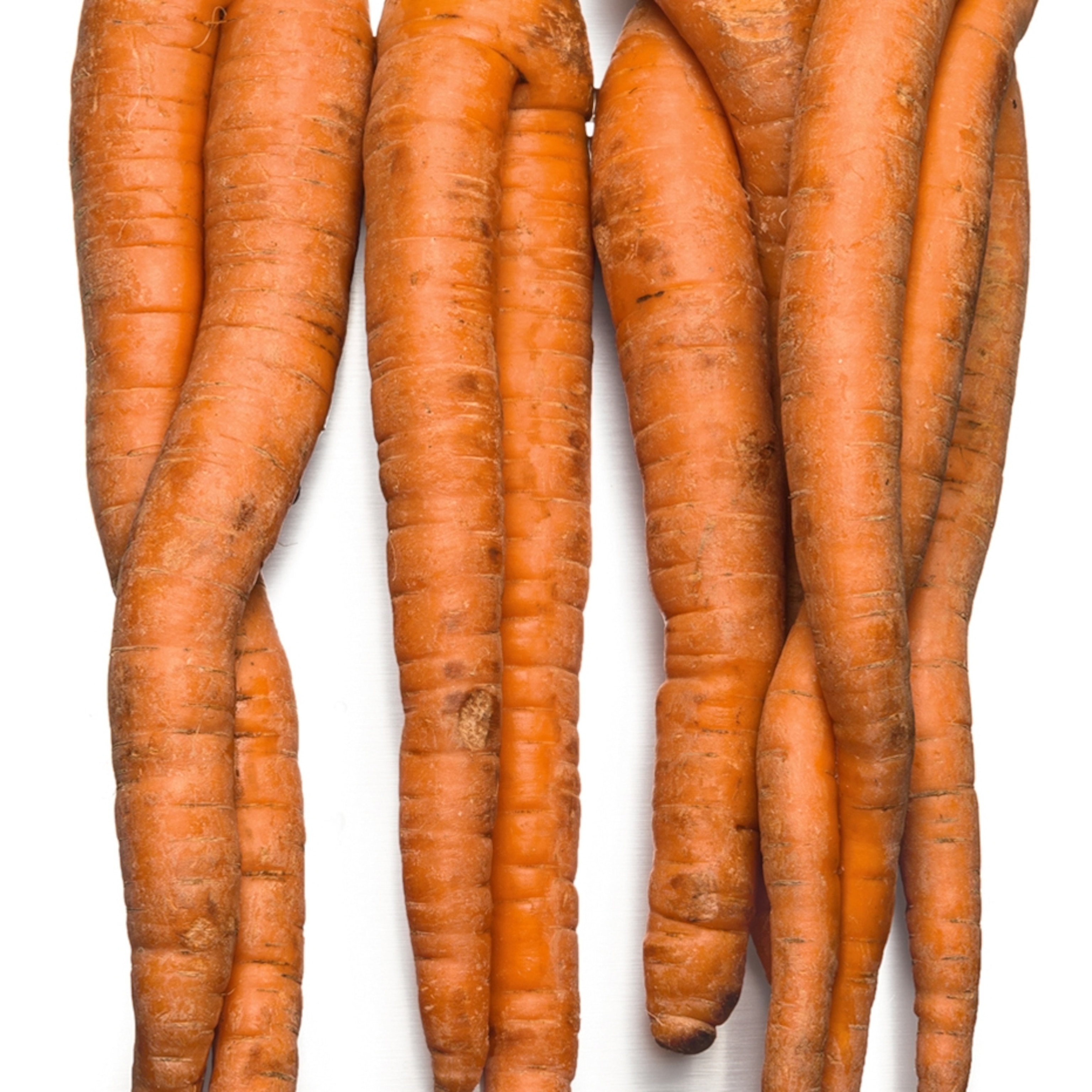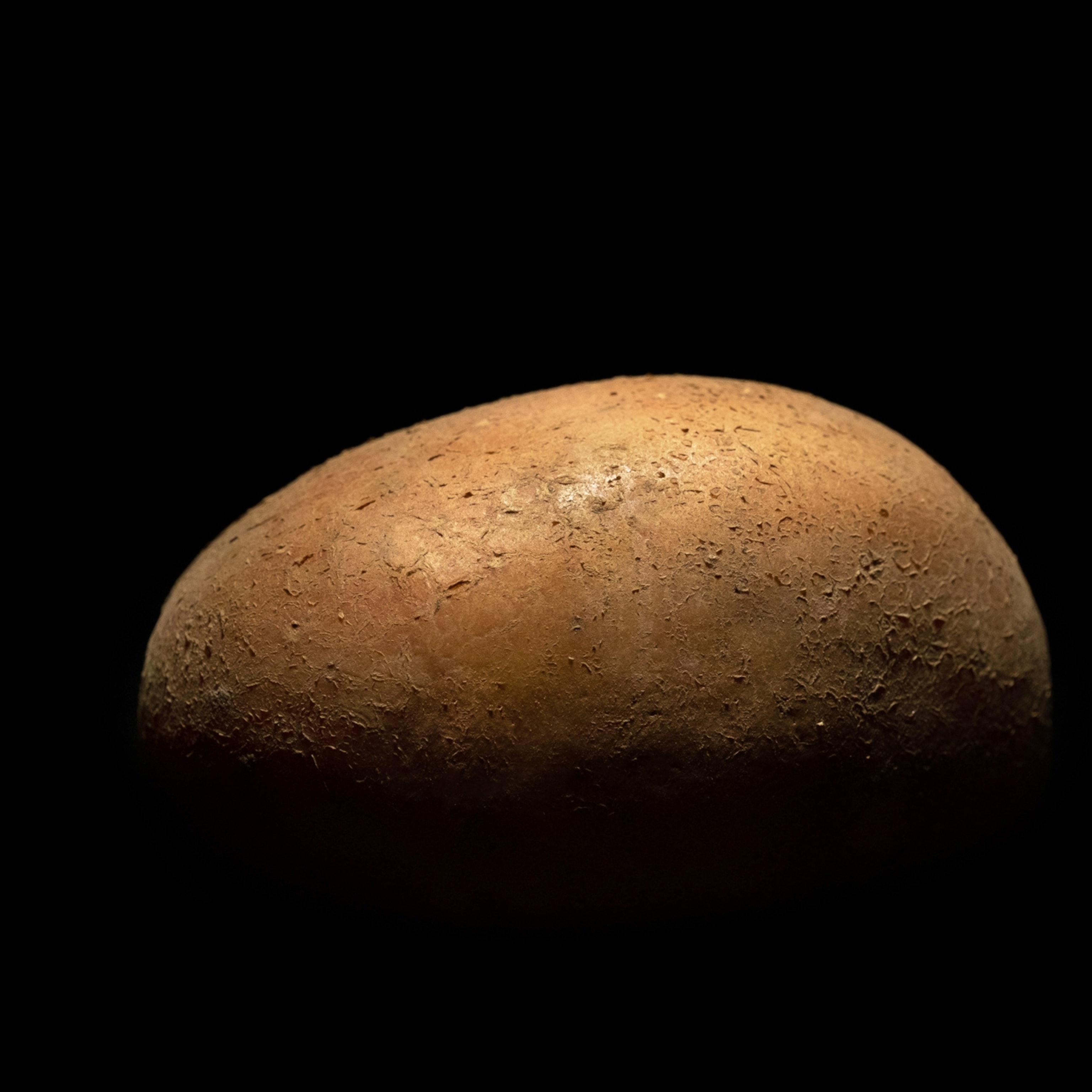
New Commercial Potato Bruises Less, Could Reduce Food Waste
“Innate” is a weird name for a potato. According to the Oxford English Dictionary, innate means native, inborn, or natural, which most potatoes are, but which J.R. Simplot’s officially named Innate potato isn’t quite.
The Innate potato, recently approved for commercial planting by the U.S. Department of Agriculture, is a genetically engineered potato tweaked to resist bruising and browning. It has also been modified to contain 50 percent to 70 percent less of the amino acid asparagine, which is converted to acrylamide, a possible carcinogen, when potatoes are heated at high temperatures like frying to make French fries. The name Innate was conferred by Simplot to indicate that—despite that fact that the potato is genetically modified—its genome, unlike those of many modified crop plants, contains nothing but plain potato.
Genetically modified (GM) food plants are often transgenic—that is, they contain inserted gene sequences from wildly unrelated organisms, among them bacteria, jellyfish, rats, mice, spiders, and scorpions. The Innate potato, however, was developed using a technique called gene silencing or RNA interference, a natural process used by everybody’s cells to regulate gene expression. Biochemically, this is the equivalent of flipping a switch from ON to OFF—in the case of the Innate potato, shutting down the manufacture of a pair of enzymes: polyphenol oxidase, the causative agent of browning in potatoes, avocados, and apples, and asparagine synthetase, essential for making asparagine, the precursor of acrylamide.

Though it’s not certain that acrylamide is a problem for people, researchers have shown that rats, fed huge amounts of it, develop cancer; and the Food and Drug Administration (FDA) and the Center for Science in the Public Interest agree that, given the choice, the less of it we eat, the better. Bruising and browning, though not a threat health-wise, have other unpleasant effects. First, we don’t like the way brownish potatoes look; and second, they put a sizeable dent in our collective pocketbooks. An estimated 400 million pounds of bruised and brown potatoes are chucked each year at a cost of $90 million to producers, most of which, inevitably, is passed along to consumers (us). (Read more about a food waste.)
Consumer Antipathy of Modified Potatoes
Simplot’s hope is that the Innate potato will be snapped up by the potato processing industry—the people who make French fries and potato chips—which is where about a third of the annual U.S. potato crop ends up. It’s also a good possibility for pre-cut fresh potatoes, which now can only be sold frozen, since ordinary fresh-cut potatoes turn a yucky brown in the bag. (Are French Fries really French? Learn about the history of the popular fried potato dish.)
GM potatoes to date haven’t had much luck in the marketplace. Among the flops was Monsanto’s New Leaf potato, approved in 1995, which incorporated a bacterial gene that rendered it resistant to the Colorado potato beetle. The potato beetle (Leptinotarsa decemlineata), a creature of voracious appetite, was first identified in 1823 by entomologist Thomas Say, at which time it was benignly feasting upon buffalo bur in the Colorado River basin. By the mid-19th century, however, neck and neck with the pioneers, the beetle had discovered the potato, the tomato, the pepper, and the eggplant, and was steadily munching its way east. Today the Colorado potato beetle has infiltrated Canada, Europe, and central Asia and has attained the status of “international superpest.” Some scientists give it credit for singlehandedly creating the modern pesticide industry. L. decemlineata is not only destructive, but adaptable, versatile, and tough. In other words, it takes a lot of effort and chemicals to kill it.
Related: Read why Rebecca Rupp is supportive of genetically modified food.
The New Leaf potato was designed to deal with beetles on its own. Its incorporated gene (from the bacterium Bacillus thuringiensis) allowed it to produce a natural insecticide known as Bt, a protein that attacks the gut linings of susceptible bugs and shuts down their digestive systems. Afflicted bugs stop eating and starve to death, which sounds cruel, but is only if you have tender feelings about potato beetles.
For humans, the Bt protein is innocuous and safe; nonetheless, the public was unhappy with the thought of insecticide-producing GM potatoes. Journalist and food activist Michael Pollan grew some, but decided not to eat any. The New Leaf, spurned by consumers, vanished from cultivation.
GM Potential to Reduce Pesticides
Similarly, potatoes engineered for resistance to blight have hit brick walls. Blight, the evil genius behind the horrific Irish Potato Famine of the 1840s—though it was initially blamed on everything from steam locomotives to volcanic eruptions-is caused by Phytophthora infestans (“plant destroyer”), a particularly relentless and devastating fungus. Today P. infestans costs us an annual worldwide $6 billion in crop losses; and its effects are so rapid and awful that the U.S. once considered stockpiling it as a possible biological weapon. To ward it off, farmers routinely drench their potato fields in pesticides, spraying as much as fifteen times per season. Blight-resistant potatoes, however, modified to contain multiple genes from naturally resistant wild South American potato varieties, have been give a cold shoulder in Europe, and have yet to be approved in the U.S.
Related: Science prevented the last food crisis. Can it save us again?
So why so much antipathy toward foods that are ostensibly beneficial? Some researchers argue that it’s our natural response to anything new and unusual, citing bygone panics over diet soda and microwave ovens. Others point out that resistance to GM food crops may be due to the infrastructure they’re commonly used to support, such as massive monoculture farms and agribusiness corporations. And many consumers argue that they’d simply like to be informed—they want to know what goes into the food they’re putting into their mouths so that they can make their own decisions.
If anything manages to break the anti-GMO barrier, though, it just might be the Innate potato. There’s nothing in it but potato. It’s safe. And it will almost certainly make a dandy French fry.
References
- Jones, Jonathan D.G., et al. “Elevating crop disease resistance with cloned genes.” Philosophical Transactions of the Royal Society B 369, April 2014.
- Pollack, Andrew. “New Potato, Hot Potato.” New York Times, 8 November, 2014.
- Pollan, Michael. “Playing God in the Garden.” New York Times Magazine, 25 October 1998.
- Thornton, Michael. The Rise and Fall of New Leaf Potatoes. National Agricultural Biotechnology Council Conference, 2003.








